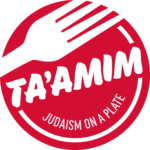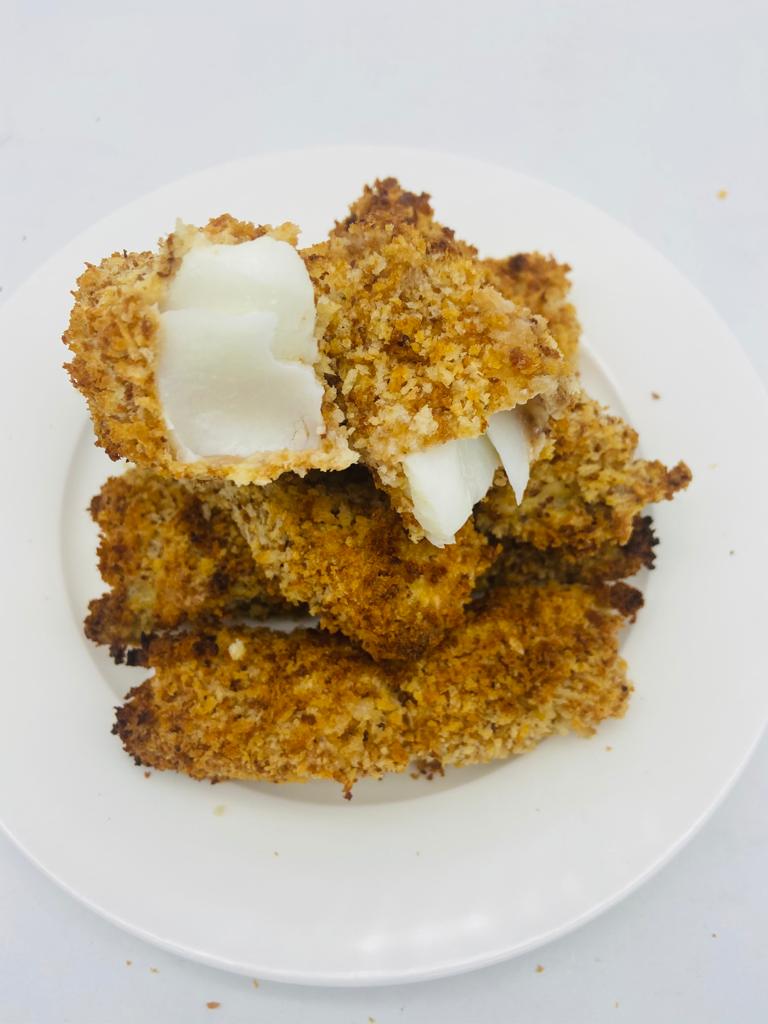Adapted from America’s Test Kitchen
Jews are credited with introducing fish fried in oil to Britain, and it has since become a national dish. In this recipe, we take that comforting national dish and move it from the frying pan into the oven — same amazing crispy results with a different cooking method.
When working with the fish, the measurements below are just for guidance; as long as you have long thinish strips, it will work.
- 1½ kilo (just under 3½ pounds) skinless haddock fillet, 2 ½ cm (1 inch) thick, sliced crosswise into 2 ½ cm (1-inch) wide strips
- 3 tablespoons vegetable oil
- 300g (3 cups) panko bread crumbs
- 90g (¾ cup) plain (all-purpose) flour + 45g (6 tablespoons) plain (all-purpose) flour
- 1 teaspoon onion powder
- 1 teaspoon garlic powder
- 1 teaspoon dried oregano
- 1 teaspoon paprika
- 1 teaspoon salt
- ½ teaspoon ground coriander
- ¼ teaspoon ground pepper
- 4 eggs
- 80g (⅓ cup) mayonnaise
- 3 tablespoons Dijon mustard
- Salt and pepper to taste
- Heat oven to 225℃ (450℉).
- Set wire rack on a rimmed baking sheet and spray with vegetable oil spray.
- Heat a large skillet over medium heat. Once hot, add the oil and when shimmering add the panko. Toast over medium-high heat, stirring constantly until lightly browned, about 5 minutes. Transfer toasted panko to a shallow dish.
- In a second shallow dish, combine 90g (3/4 cup) flour with onion powder, garlic powder, oregano, paprika, salt, coriander, and pepper and set aside.
- In a third dish, whisk the remaining 45g (6 tablespoons) flour, together with the eggs, mayonnaise, and mustard. Season with salt and pepper.
- Pat the haddock strips dry with paper towels, and season lightly with salt and pepper. Working with 1 strip at a time, coat haddock strips lightly with flour mixture; dip in egg mixture; and dredge in panko, pressing to adhere.
- Transfer to the prepared wire rack and bake until crumbs are golden and haddock is cooked through, 10 to 12 minutes.
- Best eaten the day they are made.


